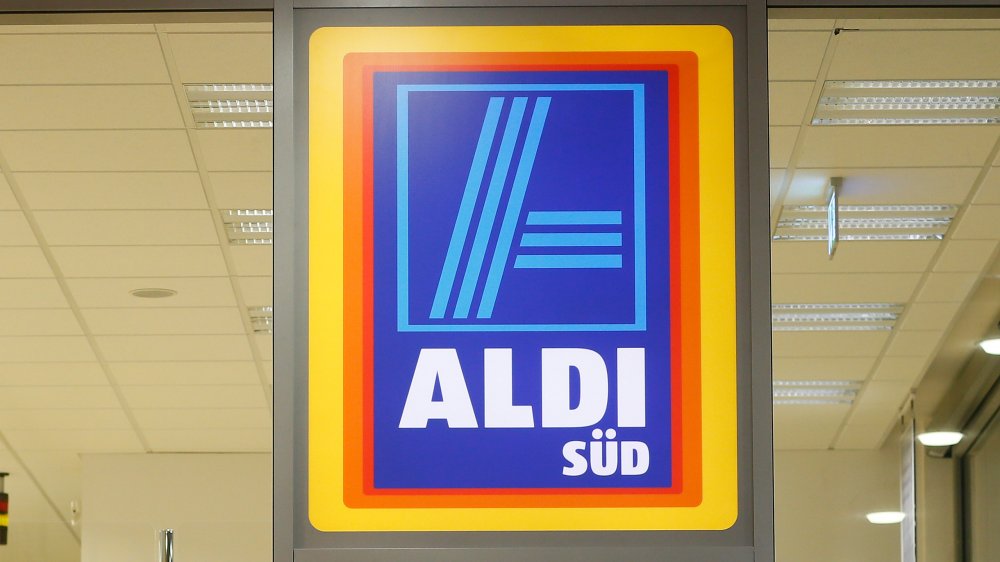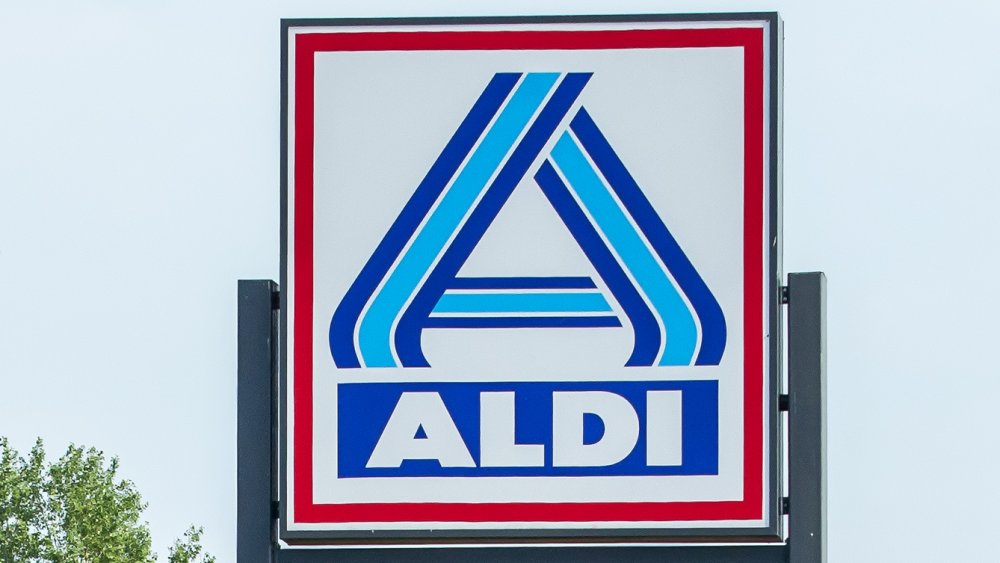This Is The Difference Between The Two Aldi Companies
We're lucky, in the United States, and indeed across Europe — really, everywhere besides Germany — to live under a one-Aldi empire. In its homeland, the grocery giant is divided into two distinct parts: Aldi Nord, identified by light blue signage, and Aldi Süd, which utilizes the classic yellow, blue, and orange insignia we're more used to seeing. As News.com.au reports, there's an invisible line dividing Germany that, thankfully, is nothing like the kind that once split the country politically, with everything either side of East and West Berlin existing as entirely different countries.
Rather, this line, which runs between Essen and a neighboring town called Mulheim, is colloquially referred to as the "Aldi equator." It cuts right through Germany, dividing the country up into the side serviced by Aldis Süd (or south) and Nord (or north). Naturally, the origins of this divide lie in a family feud, but the ramifications are keenly felt to this day, leaving an indelible mark on the grocery chain's origin story.
Let's dive into the difference between these two Aldi companies.
Aldi broke into two parts as a result of a family feud
News.com.au notes that the first Aldi store opened in 1913, just east of what is now dubbed the "Aldi equator," in Essen. By the end of World War II, brothers named Theo and Karl Albrecht took over the Albrecht Diskont family business — later shortened to Aldi — with 100 branches popping up over the ensuing decade as the brand went from strength to strength. However, they had a falling out in the early '60s: Theo apparently wanted the business to sell cigarettes while Karl didn't, per CNBC. They ultimately split the company in two, with the former running the northern stores, as Aldi Nord, and the latter running the southern branches under Aldi Süd.
Although Aldi customers outside Germany may feel unaffected by the divide, there are slight differences, including signage. It's also worth noting that branches in Australia, the U.K., and China are all under the Süd umbrella, while France, Denmark, and Poland are Nord. U.S. stores fall under Süd, too, though Nord operates the supermarket chain Trader Joe's – meaning the two Aldis technically coexist in the States, too.
However, the end to the decades-long feud may be in sight as Germany's Manager Magazin (via Retail Detail) reports that a merger is in the offing, with Nord and Süd looking to finally come together by 2022 due to "increased competition" from all sides. Aldi, naturally, denies this.

